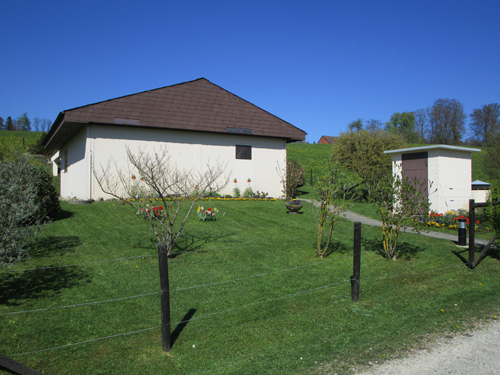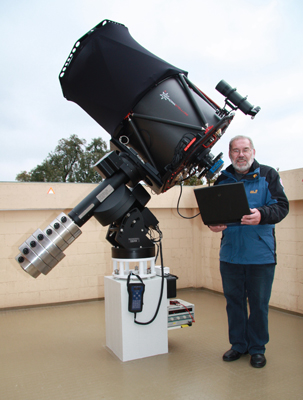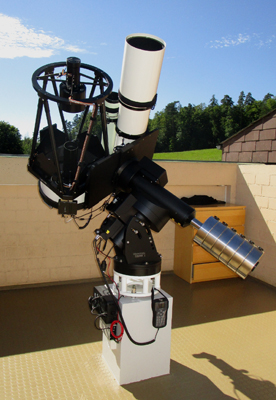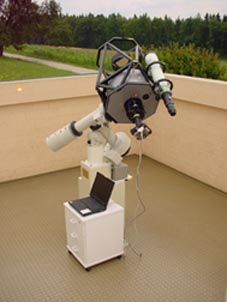Eschenberg Observatory, Switzerland
With a budget of only 65.0000 CHF, but with more than 2,000 working hours put in by volunteers, the Astronomische Gesellschaft Winterthur established the Eschenberg Observatory in 1979. Initially its facilities were very spartan, but the observatory has evolved into an established regional cultural and educational institution—and also into a well-known observing station for near-earth asteroids and comets.
Description Image Gallery
Geographical position
Located in a remote forest glade in a large woodland directly south of Winterthur, Switzerland
Location
Latitude 08° 44’ 34.1" east, longitude 47º 28’ 28.9" north, 542m above sea level.
General description

The observatory, as viewed from the adjacent footpath. © Eschenberg Observatory
The location of the observatory, in a large forest glade on the southern slope of the Eschenberg hill, means that it is shielded to a considerable extent against light pollution from the city of Winterthur to the north. while to the east, south and west, there has been only a small population within a radius of about 10 km (but see “Main threats or potential threats” below for recent developments). This has allowed the observatory to enjoy a rather well preserved dark sky, while still being relatively accessible to the general public from the Winterthur area.
Brief inventory
Over the observatory’s years of operation, the equipment has been continually upgraded and replaced, resulting in a state-of-the-art infrastructure.
The Heuberger astrograph

The 600mm/f3.8 Heuberger Astrograph. © Eschenberg Observatory

Multi-purpose telescope on the western observation platform. © Eschenberg Observatory
Older instruments, not currently in use
The Friedrich Meier telescope and the TMB refractor

402mm “Friedrich-Meier” telescope. © Eschenberg Observatory
History
Since April 1979 the observatory has provided astronomical education and guided evening sky observations for the general public. As of 2018, the visitor count is approaching 100,000.
Present use
The voluntary team (currently five people) offers free tours once a week on Wednesday evenings, and has done so since 1979. Private (paid) tours are also possible for groups. The researchers use the observatory to monitor asteroids and minor planets.
Scientific achievements
With IAU station code 151, the observatory has been providing high-precision location data for newly discovered or unconventional minor planets to the IAU Minor Planet Center since 1998. With more than 21,000 datasets communicated to the MCP, the observatory leads this effort in Switzerland. So far, ten discoveries of minor planets are officially attributed to the observatory, one of these actually being named after the observatory.
State of conservation
The team not only provides the guided tours, but also maintains the instruments, the building and the surrounding garden.
Main threats or potential threats
- In 2018, a major apartment complex hosting 144 individual apartments together with industrial real estate was built only 1.5 km south-east of the observatory. This project, in a village of currently about 1400 inhabitants, could influence the quality of the dark night sky for the observatory. The consequences are being closely monitored by the team.
- Financial support for the ongoing operations is getting more and more difficult to secure.
Protection
As a private property owned by the Astronomical Society Winterthur, the observatory receives a modest annual financial contribution from the City of Winterthur, and relies upon private and corporate donations for major renovation projects.
Links to external sites
- Official website of the observatory http://eschenberg.ch/
- Link to Google Maps
Links to external on-line pictures
Bibliography (books and published articles)
Back to the Astronomical Heritage - Places connected to the Sky
Return to the Places connected to the Sky map/list page.
About the author(s)
Rüdiger Schultz lives in Vienna (Austria)
Contributions by Markus Griesser